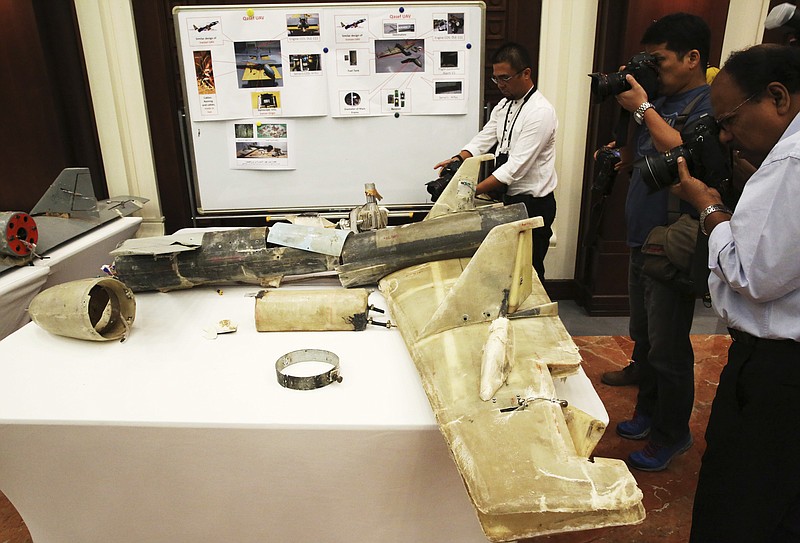SANAA, Yemen (AP) — A bomb-laden drone launched by Yemen’s Shiite rebels exploded over a military parade Thursday for the Saudi-led coalition, killing at least six people in a brazen attack threatening an uneasy U.N.-brokered peace in the Arab world’s poorest nation.
The attack at the Al-Anad Air Base showed the unwillingness of Yemen’s Houthi rebels to halt fighting in the civil war, even if it doesn’t violate a peace deal reached last month in Sweden between them and Yemen’s internationally recognized government.
The Houthi attack near the southern port city of Aden with a new drone variant also raised more questions about Iran’s alleged role in arming the rebels with drone and ballistic missile technology, something long denied by Tehran despite researchers and U.N. experts linking the weapons to the Islamic Republic.
The assault shocked the pro-government troops, who carried away the dead and wounded, their fatigues stained with blood. All the victims were government forces, officials said.
“We were under the impression that the coalition has a tight control over airspace and there is no way the Houthis can send drones or planes to attack us in the south,” said Mohammed Ali, a solider in Al-Annad 2nd Brigade guarding the parade.
Yemeni army spokesman Mohammed al-Naqib was speaking at a podium during the parade, with photos of Yemen’s president and Abu Dhabi and Saudi Arabia’s crown princes behind him, when a high-pitched whine drew his attention and others. A moment later, the drone exploded overhead, pelting him and others with shrapnel.
In the chaotic aftermath, soldiers carried away a severely wounded comrade. A pool of blood collected in front of the plush seats set aside for high-ranking military officials.
At least six people were killed, medical officials said. Among the wounded were Yemeni Military Intelligence Service chief Mohammad Saleh Tamah; Deputy Chief of Staff Saleh al-Zindani; senior military commander Mohammad Jawas; and Lahj Gov. Ahmed al-Turki, Yemeni officials said. All the officials spoke on condition of anonymity because they were not authorized to talk to journalists.
The Houthis immediately claimed the attack in the southern province of Lahj at a base where U.S. special forces once led their own drone war against Yemen’s al-Qaida branch.
Although the attack did not technically violate a cease-fire negotiated last month for the port of Hodeida, it was hoped that deal might eventually lead to a general de-escalation in the fighting.
“Once again this proves that the Houthi criminal militias are not ready for peace and that they are exploiting truces,” said Moammar al-Eryani, the information minister of Yemen’s internationally recognized government. “Here the Houthi militias are sending Iranians plane carrying explosives to prove to the world that they’re not serious about peace and they only understands the language of force.”
The government described the attack as “a message of blatant defiance to the international community and outright rejection to peace efforts.” It blamed the U.N. for its “silence and leniency” toward the Houthis, saying that has encouraged the rebels to continue “barbaric and aggressive practices … threatening the regional security.”
Yahia al-Sarei, a spokesman for Houthi-affiliated forces, called the drone attack a response to the coalition’s continuation of “airstrikes and targeting innocent civilians and the escalation of the mercenaries across all front lines.”
Yemen plunged into civil war in 2014 when rebels captured the capital of Sanaa. A coalition led by Saudi Arabia entered the war in March 2015 as government forces looked poised to lose Aden to the Houthi advance. The U.S. supported the coalition for years despite its airstrikes killing civilians, and is only recently beginning to step back after the October killing of Washington Post columnist Jamal Khashoggi at the Saudi Consulate in Istanbul by Saudi agents.
The two sides last month agreed to a prisoner swap and cease-fire in Hodeida, a port of entry for much of the humanitarian aid to Yemen, to try to provide relief to a population pushed to the brink of famine by the war.

